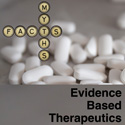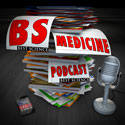Episode 45: Practice Changing Articles – with Double the Mikes Part II
In our 45th episode, we review a few more practice changing studies with Dr Mike Kolber. We go through the renal outcomes of a large trial of ACE or ARB or together, the benefits of medical therapy to pass of renal stones and then we journey into another evidence void to review the most recent antibiotic prophylactic guidelines from NICE (UK) and the US. At the end James tries to sort out which Mike is the expert and which one is just opinion, and he can’t so he enrolls them both in an RCT without their consent.
Show Notes
1) Renal outcomes with ACE & ARB (alone or combined).
Canadian Hypertension Education Program (CHEP) urges physicians NOT to combine ACE & ARB
2) Medical therapy for renal stone passage.
3) Antibiotic Prophylaxis for Infective Endocarditis
J Am Coll Cardio 2008;52:676-85
Who gets prophylaxis
- US: dental procedures with manipulation of either gingival tissue, the periapical region of teeth or perforation of the oral mucosa
- Prosthetic cardiac valves or prosthetic material used for cardiac valve repair
- Previous infective endocarditis.
- Congenital heart disease (CHD – see below for clarity)
- Cardiac transplant recipients with valve regurgitation due to a structurally abnormal valve.
- “Patients with CHD. (Level of Evidence: B)
- Unrepaired cyanotic CHD, including palliative shunts and conduits. (Level of Evidence: B)
- Completely repaired congenital heart defect repaired with prosthetic material or device, whether placed by surgery or by catheter intervention, during the first 6 months after the procedure. (Level of Evidence: B)
- Repaired CHD with residual defects at the site or adjacent to the site of a prosthetic patch or prosthetic device (both of which inhibit endothelialization). (Level of Evidence: B)”



